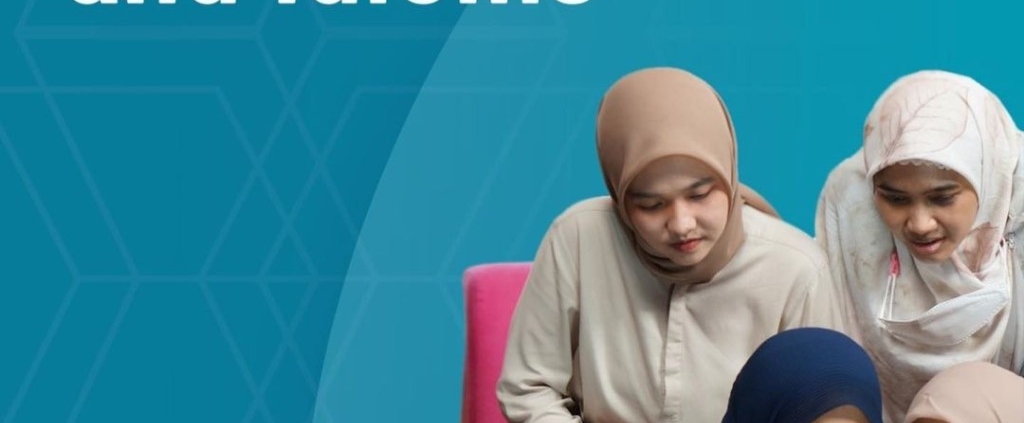Bima Baihaqi Candra MAN 2 Kota Malang
The pandemic has taken a toll on most country’s states of education. In Indonesia, millions of children are forced to adapt to online learning. Approximately 60 million primary to secondary students must study at home and rely on gadgets to enable their education since the government announced that schools are closed indefinitely. From early 2020 till this very day, most schools are practicing online learning. Previously, however, some schools have tried to establish offline learning for a short period. Schools have returned to the digital learning method due to the increasing number of covid and the reports of new variants. The implemented digital curriculum has become the norm of learning in this pandemic in Indonesia. From homework, presentation to school events have adapted to a digital structure. The transition to online learning was sudden and unprepared; however, it could produce maximum results with the proper actions. Online learning has several advantages and disadvantages; likewise, its counterpart both exceeds each other in different features, and below are the aspects in which both excel on their respective elements.
The appearance of online learning provides mobility and flexibility, in which teachers and students can set their own learning pace. Schools now can set schedules per their needs. Some Indonesian schools now adopt shortened programs compared to the usual, leaving the students with more free time that students can utilize for self-improvement or family bonding activities. With the geographic restrictions lifted by online learning, schools can reach out to a more extensive range of students. Moreover, online learning can be archived with the recording feature, allowing the materials to be viewed later on by the students for future references at a time of their convenience.
Online learning also provides affordability. Before the digital era, Indonesian schools primarily relied on hard copy materials for the learning process. Students must purchase hard copy materials such as books or worksheets known as UKBM at the local bookstore or the school’s cooperative at a relatively low price. However, in an online environment, education materials are available anywhere. From websites to social media posts, study materials are inclusive as ever these days. With the hard materials replaced, students and teachers are at ease since studying materials can be delivered within a single click. Establishing online learning also eliminates the cost of transportation meals, not to mention the hard copy materials, therefore creating a paperless learning environment, bringing economic affordability while also being beneficial to the environment.
Despite the advantages mentioned above, online learning still possesses several disadvantages in Indonesia. The country is still experiencing learning loss due to the nonoptimal realization of online learning. Learning loss is a condition in which a country’s education is degrading. The World Bank data stated that as a result of the pandemic, the country (Indonesia) has lost about a half year of learning. Online learning has yet to be realized optimally, primarily in rural areas where educational facilities are limited. Rural education aside, these are the negative traits of online learning common in many Indonesian students.
The flexibility that online learning provides is often taken for granted by both students and teachers. From the student’s perspective, students and teachers can take online learning anywhere as long as they have an internet connection. In previous times when offline schools still existed, to undergo a vacation, a permit must be submitted and signed by the teachers. Recently, however, for students to ask permission to be dismissed from online learning is just within a click. As a result, many students can be absent without a specific permit from the school. On the other hand, from a teacher’s perspective, it is more or less the same as the students, and it is affecting the quality of the learning process in which it is producing less optimal results due to unfocused lectures.
It is undeniable that online learning’s affordability has helped the citizens financially. However, the downsides are that the technology that online learning requires is considered relatively expensive in Indonesia, mostly in rural areas. Rural areas lack proper facilities and funding, and as a result, online learning is unable to be conducted optimally. Therefore, rural areas are constantly experiencing learning loss due to the government’s latest policy to close schools.
In addition to its affordability, whereas students can get materials digitally, we can infer that in this pandemic, students must be in front of a gadget to participate in online learning for long periods. The LED on devices emits blue light radiation, potentially harmful to eye health. Most online schools have shortened the study schedule to give students a rest from harmful radiation from their phones. However, knowing the characteristic of Indonesian adolescents, they would most likely keep using their phones to surf social media or enjoy digital entertainment, thus increasing blue light exposure, which affects their eye health.
Lastly, but the most critical aspect of learning itself, the presence of a teacher is essentially the most contributing factor to a country’s educational development. The process of online learning eliminates the real-time chemistry between students and teachers. Chemistry is essential as it strengthens the bond and increases the study spirit of the students, therefore enabling students to produce optimal results. Whereas in online learning, the conversation between teachers and students feels awkward and silent. Students require real-time interaction to build chemistry and to understand the subjects thoroughly. It provides them productivity support and learning with satisfaction, and later on nurtures their problem solving and critical thinking skills, which online learning has yet to offer.
From the aforementioned points comparing online and offline learning, we can infer that offline learning offers better benefits for the country’s future. Online learning will surely be the norm of education in the future, and it can be conducted optimally with a better system and the proper equipment and primed planning. However, offline learning has again been put on hold with the current situation in which the pandemic is rising with new variants in several significant provinces. Therefore, regardless of the learning method, as fellow students, we can only do our best while hoping for the pandemic to rest.
References
Ferdy-Ramesyah. (2020) https://kumparan.com/ferdy-ramesyah/pisa-skor-pendidikan-indonesia-masih-di-bawah-rata-rata-dunia-1usItNpTYEW
Vania Rossa- Dini Efendi (2020) https://www.suara.com/health/2020/12/16/141248/akibat-pandemi-40-persen-pelajar-indonesia-kehilangan-motivasi-belajar
Dr. Sudipto Pakrasi (2019) https://www.medanta.org/patient-education-blog/health-hazards-of-electronic-devices-for-kids-eye-health/
Short Biography
Greetings reader and judges, my name is Bima Baihaqi Candra. I come from Tangerang but lives in Surabaya, I am currently a sophomore at MAN 2 Kota Malang. I enjoy writing as one of my hobbies besides playing music (Piano & Violin) and sports. By participating in this competition, I hope to increase my experience in writing whilst nurturing my writing and english skills.















